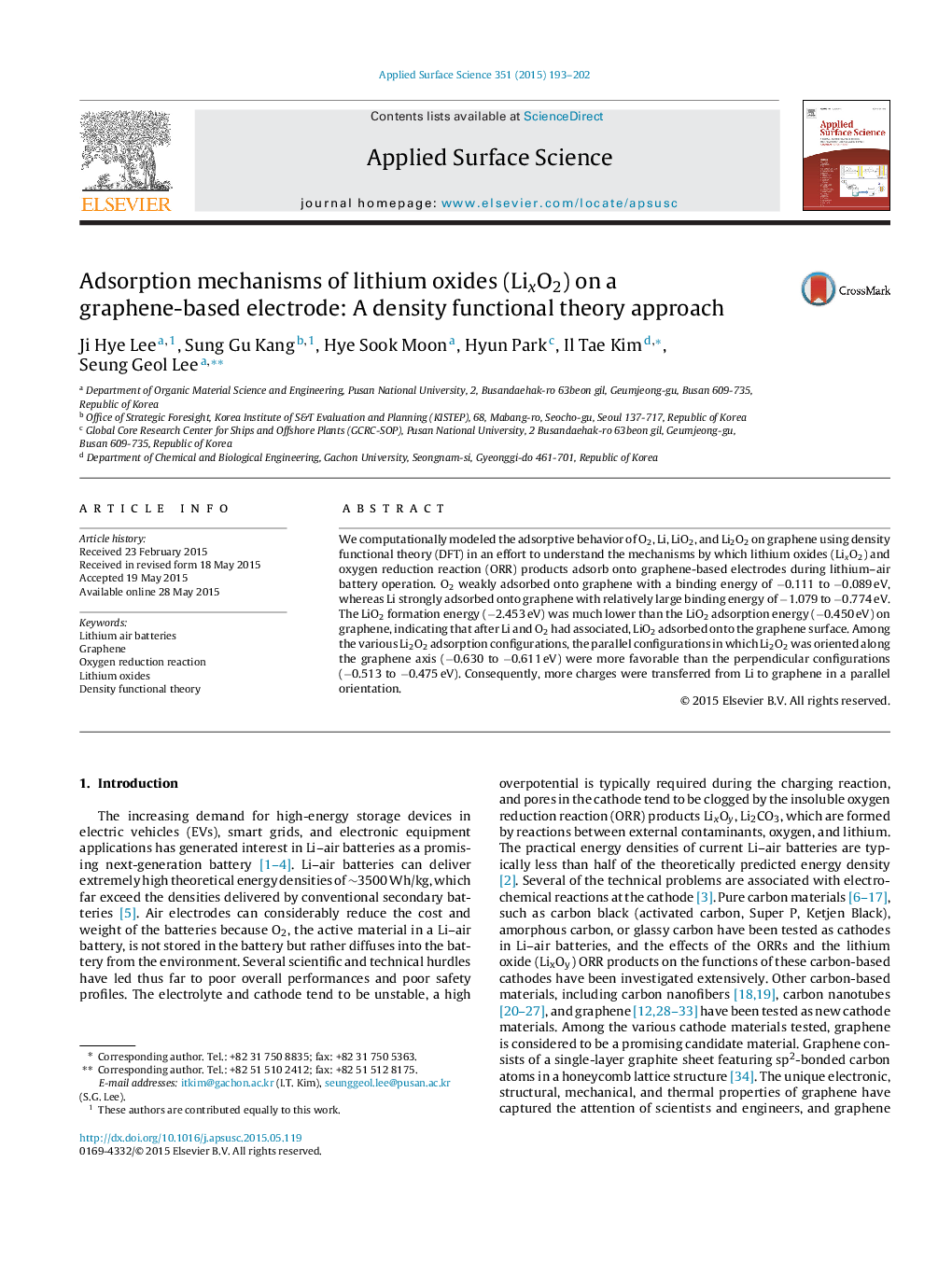| Article ID | Journal | Published Year | Pages | File Type |
|---|---|---|---|---|
| 5357945 | Applied Surface Science | 2015 | 10 Pages |
Abstract
We computationally modeled the adsorptive behavior of O2, Li, LiO2, and Li2O2 on graphene using density functional theory (DFT) in an effort to understand the mechanisms by which lithium oxides (LixO2) and oxygen reduction reaction (ORR) products adsorb onto graphene-based electrodes during lithium-air battery operation. O2 weakly adsorbed onto graphene with a binding energy of â0.111 to â0.089Â eV, whereas Li strongly adsorbed onto graphene with relatively large binding energy of â1.079 to â0.774Â eV. The LiO2 formation energy (â2.453Â eV) was much lower than the LiO2 adsorption energy (â0.450Â eV) on graphene, indicating that after Li and O2 had associated, LiO2 adsorbed onto the graphene surface. Among the various Li2O2 adsorption configurations, the parallel configurations in which Li2O2 was oriented along the graphene axis (â0.630 to â0.611Â eV) were more favorable than the perpendicular configurations (â0.513 to â0.475Â eV). Consequently, more charges were transferred from Li to graphene in a parallel orientation.
Related Topics
Physical Sciences and Engineering
Chemistry
Physical and Theoretical Chemistry
Authors
Ji Hye Lee, Sung Gu Kang, Hye Sook Moon, Hyun Park, Il Tae Kim, Seung Geol Lee,
